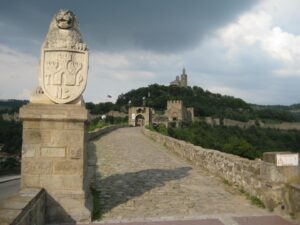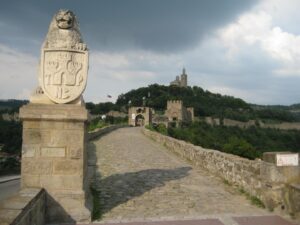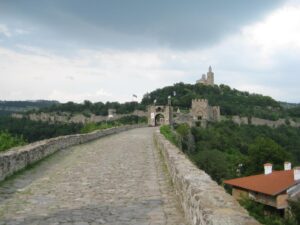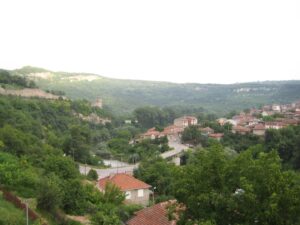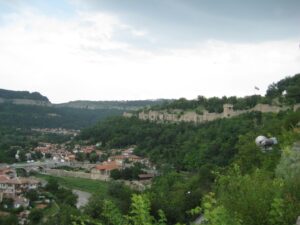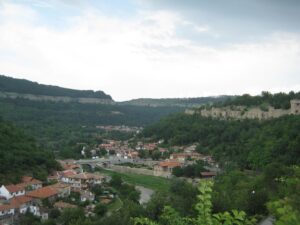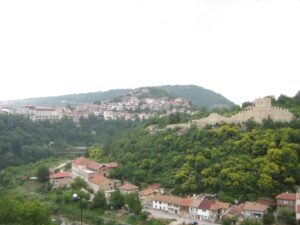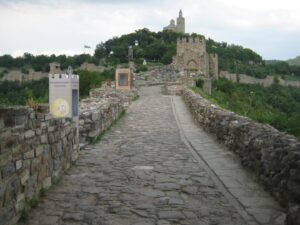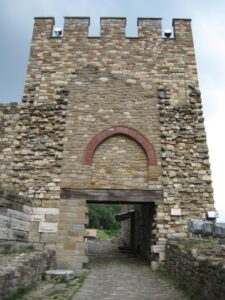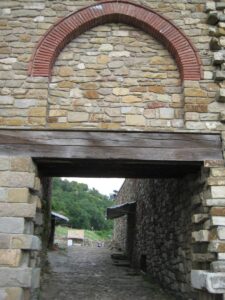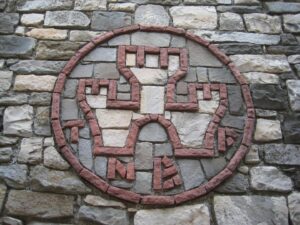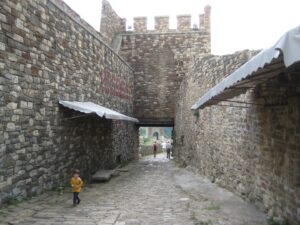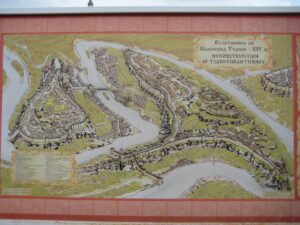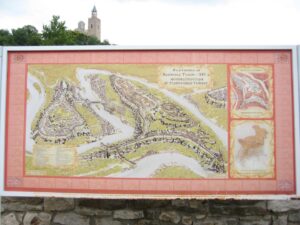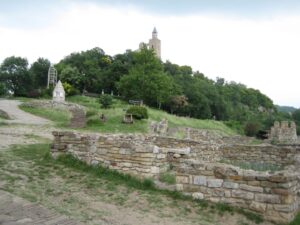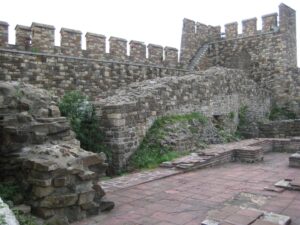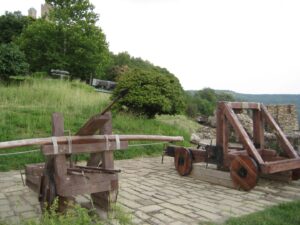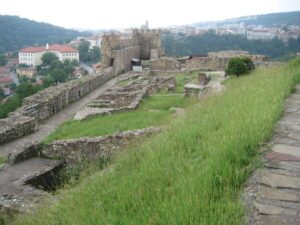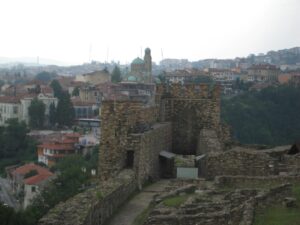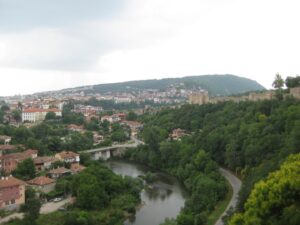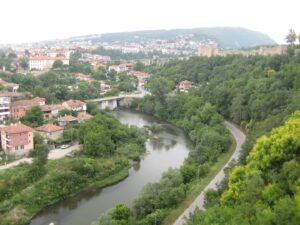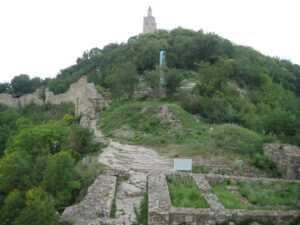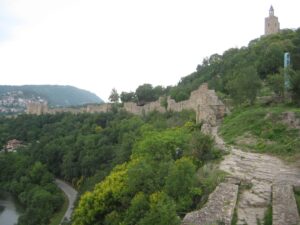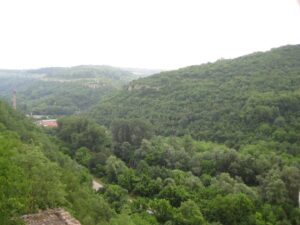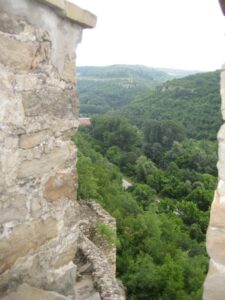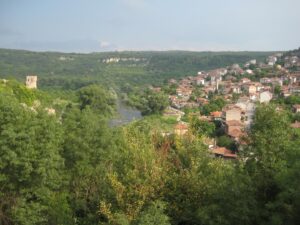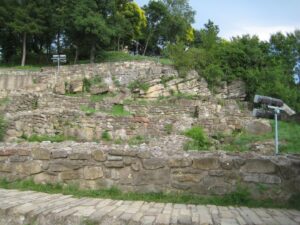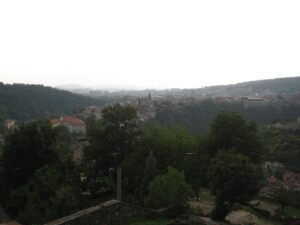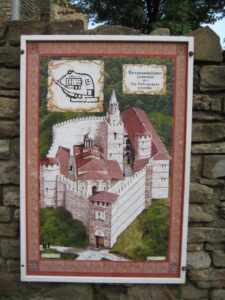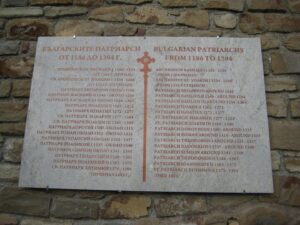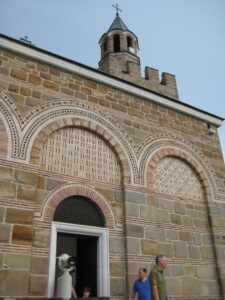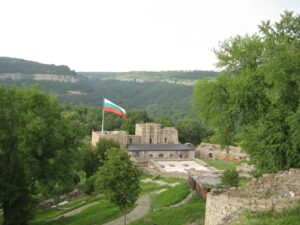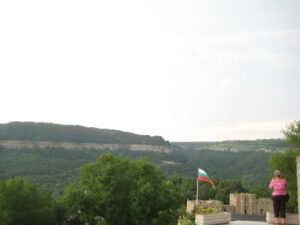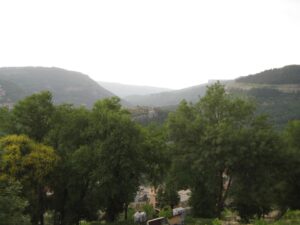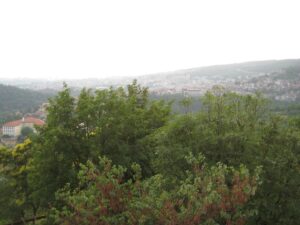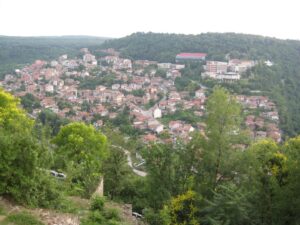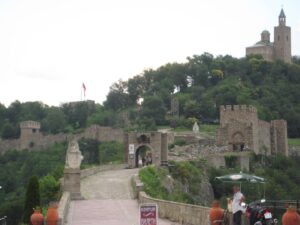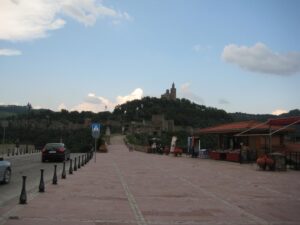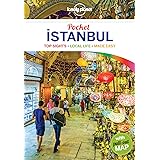© Photos and Text by Okay Deprem http://www.northtravel.org/
Months later, I am back in Bulgaria, the land of forests and mountains. This time with the group of a tourism agency, to see many more cities, settlements and discover the hidden paradises and hidden oases of the country. While Turkey is starting to scorch with the summer heat, in Bulgaria, the neighboring country in the northwest, it is sometimes quite cool and even rainy; In short, the weather conditions are observed in the last week of June. After leaving the historical city of Kazanlak, which is almost in the middle of the country, after passing through the village of Shipka and its famous passage and of course seeing its huge monument, after leaving behind the cities and towns named Etara, Gabrovo and Drianovo, in the first place, Arbanassi, a historical village of Veliko Tarnovo Municipality. We’re standing too.
Arbanassi Village and Albanian origin
Arbanassi is full of valuable churches from the 17th and 18th centuries and examples of civil architectural structures built around the period when the Bulgarians called it “National Awakening”, “National Revival”, or “Rebirth” and were built around the time they became independent from the Ottoman Empire.
As in many other parts of the country, this place has undergone a very masterful total restoration – renovation and reconstruction work, and it must be admitted that Bulgarians are much more successful, serious and stable than Turkey in this respect. Only 4 km from Veliko Tarnovo. Arbanassi, located on a large plateau in the middle of a large town called Gorna Oryahovitsa, sheds light on an interesting historical information, above all, in terms of its etymological roots.
The name of the village is derived from an Albanian word called “Arbanas” meaning “agricultural worker”, “agricultural worker”. And again, the word Albanian in Turkish was formed by deriving from this word root.
Although its population is only a few hundred thousand, Arbanassi Village has become an important touristic destination and frequented place in recent years. According to some historians, Bulgarian settlement started in the village after the victory of the famous Bulgarian Boyar Ivan Arsen II, near Klokotnitsa in 1280, against the Byzantine forces, with whom they were in constant struggle during the Classical Middle Ages. Since there were mostly Albanians in the settlement at that time, its current name was formed.
The first written document on the history of Arbanassi is seen in an edict issued by the Ottoman Sultan Suleiman I (Kanuni). The edict in which he declared that he had gifted the Grand Vizier Azam, the large land and settlements in the vicinity, to Rüstem Pasha. As we learn from the chronicles, the first settlers were Greeks as well as Albanians, but also in Arbanassi.
As a matter of fact, we see that the Bulgarian tribes, who had just spread to these lands in ancient times and were not mixed with the proto-Slovs living in this region at that time, wrote in the old Greek alphabet when they did not have their own alphabet. It is known that the people of Arbanassi have spoken Greek for centuries as well as the official language of all churches.
Just like everywhere else in the Bulgarian lands, we encounter a very strong craft tradition and an ambiance in which all kinds of handicrafts and manufactures are still kept alive. Almost all of them are on display in their restored, Ottoman-Turkish mansions, reminiscent of 2-storey wooden houses, and are offered to tourists by the women in local clothes on the street.
The City Linking the Medieval and the Present: Veliko Tarnovo
It would not be an exaggeration to say that Veliko Tarnovo means the same thing for the historical lands of Bulgaria as Toledo, the former capital of the Kingdom of Castile, means for Spain. Tarnovo, the capital of the province of the same name, is spread over the geography on the hills called Tsarevets, Trapezitsa and Sveta, formed by the legendary Yantra River and deep valleys split by its tributaries.
Veliko Tarnovo, which was the capital city of the 2nd of the 3 Bulgarian Kingdoms in history, is often called the “City of the Tsars”. Legendary with its unique and rare architecture, extraordinary virgin and green nature, Tarnovo attracts a considerable number of tourists every year, both from within the country and from many different parts of the world.
Veliko Tarnovo, which was seen as one of the cultural cities of Europe in the Middle Ages, is named after; at the same time, it gives its fame to the “Tarnovo Art School”, which has gone far beyond its borders, especially for the art of icon and fresco painting, and its magnificent architecture.
Veliko Tarnovo, which was a very important economic, educational and cultural center until the Ottoman Empire conquered these lands, until the end of the 14th century, is derived from the Slavic words “Velikiy” meaning big and “Tranov” meaning thorny. It can be thought that before the first settlements were established in the area by the proto-Thracian tribes, this place had a wild flora covered with thorny wild plants. Long before it was settled by the Bulgars, who first broke away from Central Asia as a union of proto-Turkic clans, then crossed the Danube tribes by crossing the Bessarabia regions after splitting into 5 branches in the North Caspian hinterland in front Asia. Tarnovo and its surroundings have a civilization history dating back to 3000 years.
Tsarevets Hill
Tsarevets is the name of the highest, largest and central hill of Tarnovo on which the medieval castle of the same name is located. The 2 Bulgarian Kingdoms, which ruled between 1185 and 1393, are surrounded by very thick and high walls, with royal and patriarchal palaces, the mansions and residences of the aristocrats of the Middle Ages, that is, the large landowners, and the houses of the bourgeois class that will gradually form. Tsarevets is a castle. As one of the best surviving Middle Age castles in Europe, especially in terms of defensive walls; yet from afar, the magnificent castle gives the feeling of being on a historical movie set. Especially, after walking one of the historical bridges passing through the deep valley split by the river, on the left, the symbol of the city and the castle;The giant stone lion statue holding the shield with the city’s emblem in its claws, and the historical stony entrance road extending beyond it, and the castle bastions that are gradually growing towards the hills, the defense towers and the historical patriarchal palace, cathedral and tower located at the top, stand out in all their majesty.
A Bulgarian castle would later be built around the castle, where a Byzantine city was founded in the 4th century, will be used by famous Bulgarian kings such as II. Asen, Petar, Koloyan, Ivan until the end of the 14th century. Castle was opened to touristic visits in 1981, in memory of the 1300th anniversary of the foundation of the first Bulgarian state in history, after a half-century renovation process that started in 1930.
Today, more of the foundations and ruins of the royal palace can be seen inside the castle complex, which was heavily damaged during the conflicts and wars of the late 19th and early 20th centuries.
Castle church with post-modern frescoes
The walls of the castle, which includes the Throne Hall, the early Christian-Orthodox church called “God’s Ascension to the Holy Sky”, the king’s other rooms and halls, the residence buildings and residences located on a 5000 square meter plot, and the patriarchate complex spread over a total area of 3000 square meters. They can reach up to 3.5 meters in thickness and 8-10 meters in height. The post-modern lines of the repainted frescoes of the church, which was restored in 1981, of the medieval castle, which is understood to have been built on a very large massive rocky mass; his extraordinary and striking compositions are enough to arouse astonishment and surprise in those who see them. The murals here briefly show that the 2nd Bulgarian Kingdom was full of glory. It is covered with paintings depicting its tragic end when it was destroyed by the Ottoman raids.
One of the biggest bastions within the castle draws attention with its historical story as well as its name: Baldwin Tower. At that time, the Khan of the Bulgarians, Kaloyan, who was in a great struggle with Byzantium, imprisoned Baldwin, one of the Latin Emperors, whom he had taken prisoner during a campaign in Constantinople, in the dungeon of the castle in Veliko Tarnovo, where he brought as a prisoner.
Thus, Baldwin I, descendant of the Crusaders, who was the architect of the greatest looting and massacres in history, found the end he deserved by dying here. A total of 400 structures, including the foundations and walls of the houses and residences of the shops of the rich tradesmen and craftsmen of the Classical Middle Ages, 4 monasteries and the remains of more than 22 churches were discovered in the vast land where the castle is spread.
As we are accustomed to typical medieval stories, the method in which criminals were executed by being thrown from the cliff of the castle towards the river was also valid here. In 1300, for example, the Bulgarian Tsar Theodore Svetoslav had the then Patriarch Joachim executed in this way.
“This article was published in the monthly journal ‘Hayat Dergi’.”

